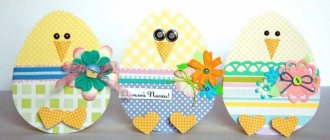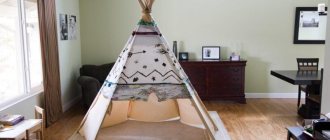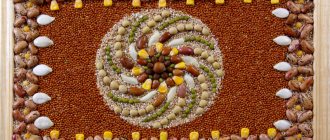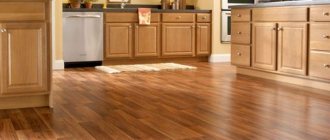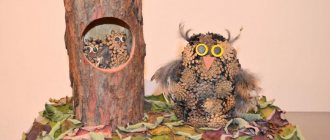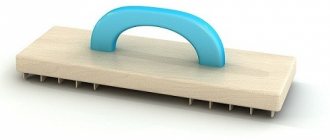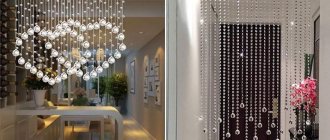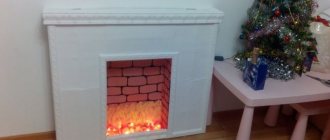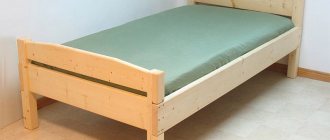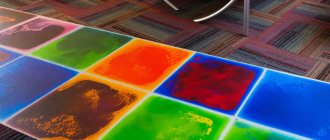Once children become more active and begin to explore the world around them, their curiosity knows no bounds. Often, such a desire to explore space gives parents gray hair when the child reaches for sockets in the apartment, switches, scissors, knives and other dangerous objects. To satisfy children's curiosity and keep your child busy with something useful, you can make a busy board with your own hands, also known as a development board. Such a bright and interesting toy will captivate the baby for a long time, it is completely safe and allows you to develop hand motor skills.
Children's educational board with a clock - owl
What is a busy board
This is an educational toy, which is a small wooden, plywood or cardboard base with many small objects. For the game, locks, doors, latches, lacing, various buttons, sockets, small puzzles, abacus, switches, buttons with fabric loops, etc. are used. The more objects that are varied in color and purpose, the more fun it is for the child to study them. Fiddling with small parts is not only a fascinating process for children, active work with fingers develops fine motor skills of the hands, in addition, such entertainment is useful for general development.
Children's educational board with various objects
A development board, purchased in a store or made independently, may differ in material, size, number of parts and color design. To make this educational item, it is recommended to use materials of different textures. Each of the elements presented on the board will give the child new ideas about the world around him.
Children's educational board with drawing board
How to choose a bodyboard according to age
For a child under one year old, it is better to use a toy made of soft material, for example, felt, cotton paper. Velcro, buttons, and ribbons work well as additional items.
For children from one to two years old, a development center on a wooden base is better suited. The main thing is to exclude sharp corners, chips, and dangerous objects.
Children over two years old like business boards of unusual shapes, for example: in the form of a house, an animal, a car, a crown... You can use numbers and letters as additional items.
Busy board is an exciting educational game that can interest a child for a long time, help him recognize many of the objects around him, and instill in him patience and consistency of actions. Also, such a game has a good effect on logic and thinking, and develops the child in many aspects. And if you make such a development center yourself, you can take into account the interests and tastes of the child, then he will be doubly happy with such a gift. When making it, the main thing is to decide on the items and the size of the board itself. As a basis, you can find ideas on the Internet or in thematic magazines, add other items as you wish and assemble an individual, original business board.
At what age can you play with a touch board?
The developmental board begins to interest the baby from about 8 months. By this time, the child already knows how to sit and focus on the process. However, until the age of one year, it is not recommended to use hard boards; at first it is worth playing with soft parts made of fabric and thick felt (when buying felt sheets, you should pay attention to their thickness, it is better to take at least 1.5 or 2 mm). All items are attached to the base using a system of Velcro and buttons.
Children's educational board with switches and light bulbs
The types of parts differ depending on the age of the child. So, a one-year-old baby is more interested in pulling handles, opening windows and doors with locks with pictures of animals behind them, pressing buttons, etc. But older children (3-4 years old) will be more interested in looking for numbers and letters, opening locks and solving simple puzzles .
Children's educational board with phones
What kinds of busy boards are there for children?
Educational boards differ from each other according to the following criteria: type of fastener, size, configuration. The main points that deserve attention when modeling the toy are carried out are:
Place of use
You can make a smart board for your child’s development yourself so that you can play with it outdoors, indoors, or use it on a trip (to entertain the baby).
If it is a street board, it is usually made large. It has legs, or it can be fixed on a wall or fence. In this case, metal objects are attached to the surface of the bodyboard.
The baby can knock: with spoons, bowls, plates. As a rule, watering cans are needed. Children love to pour out water. You also need tubes of different diameters for balls to roll on them, etc.
If you want to make your child’s busy board yourself, you can take a large sheet of plywood or 50x50 material.
Options for outdoor children's bodyboard:
- with legs;
- moved to the wall;
- portable.
All kinds of objects are used on these toys. The easiest option is to use different locks. Complex is educational information. For example, numbers and watches.
It’s not difficult to make a children’s educational travel board with your own hands. It will look like the plane of an A-4 (or A-5) sheet, which the baby can move to the place where it is convenient to play. This busy board requires thin plywood. It is covered with fabric or foam rubber.
For the road board, select items that are light in weight. They are necessary when sewing clothes. We are talking about adhesive tape, snaps, buttons, a loop with lacing, a zipper. It is interesting for a child to study appliques made like shoes (or other shoes) and a dress (or coat, blouse, etc.)
Baby's age
Do you want the board to arouse your baby’s interest and not stand there unnecessarily? This means that the age of the child must be taken into account when parents select a busy board.
For example, a huge board, several times larger than the baby in size, equipped with numbers and a clock, can generally disappoint the baby.
You need to choose items that are age appropriate. Kids won't be interested in tinkering with construction kit parts. For children of this age, tactile sensations come first. Parents can use fabric (a variety of fabrics), pockets, and buttons.
A soft version of the bodyboard has been developed. This is not a board at all, since it has a fabric base. For 6-month-old babies, it is advisable to use rustling shreds, bright beads on laces, and wheels.
For children who are 2 years old, you can use all kinds of locks. They will be interested in lightning and numbers.
What subjects to choose
A number of companies involved in the production of educational boards accept orders for the production of such toys according to individual standards. However, the development board is simple enough that you can make it yourself.
Children's educational board with the child's name
Children's educational board with numbers and drawing board
Children's educational board with houses
The main thing is to decide in advance what needs to be placed on it:
- buttons with loops;
- hooks for clothes;
- doors with locks;
- small light bulbs;
- switches;
- sockets;
- abacus;
- toggle switches;
- buttons or telephone dial;
- remote controller;
- eyelets with laces to help you learn to tie shoes;
- coils, etc.
The choice and quantity depends on the age of the child. The older it is, the more complex in design the parts may be present on the gaming panel.
Children's educational board with telephone
Children's educational board with telephone
Children's educational board with various interesting objects
Busy board for girls
How to choose a busy board for girls ?
The main colors that indicate a girl’s toy are pink, light green, peach, soft lilac, golden; this could be the background itself or the predominant shade of the details.
How to equip a board for a girl?
What interests her:
- beauty,
- needlework,
- household concerns.
Of course they will do:
- sockets with plugs,
- locking mechanisms,
- watch,
- small bills,
- keyboard from a calculator.
You can also attach all sorts of things:
- hooks,
- lacing,
- lightning,
- buttons,
- buttons,
- abacus.
Surely every little girl will be delighted with a paper doll that can be dressed and undressed.
It’s just better to attach the doll from thick cardboard or, even better, from fiberboard.
Drawing and carefully cutting it out will not be difficult even for people who are far from artistic skill.
You can attach a real clothesline and hang some clothespins; A small mirror will also come in handy; Glued-on multi-colored envelopes for secrets, fake braids with hairpins and elastic bands, pendants and bells will look good. Girls can also be offered a bodyboard in the style of a hair salon:
- with mirrors,
- combs,
- tassels,
- brushes.
Or in the style of the store
- with real small bills,
- calculator
- toy scales
How to make a busy board safe
Even if you keep an eye on your child during games, the development board itself (its elements and materials) must be safe.
- The finished board must be well secured so that it does not accidentally fall on the baby’s head during particularly intense play.
- When choosing a base for the game panel, make sure that it is smooth and free of nicks. Corners and sharp protrusions must be rounded yourself or covered with special plugs or soft material.
- Each removable part must be tied to the panel with a strong cord so that the baby does not accidentally drag it into his mouth and swallow it.
- Once you attach all the components to the board, be sure to check that they are securely fixed. A small child should not tear them off, even if he makes every effort.
- If the toy has luminous parts, they must be powered only by batteries.
- A development board, purchased or home-made, can be safe. But the number of elements depends only on the age of the children playing and their personal inclinations.
Children's educational board with compass
What is better: making a bodyboard yourself or buying it in a store?
To decide, take a short test. For each answer “yes” you get 0 points, “no” - 1 point.
- Do you have 8-10 hours of free time? - NOT REALLY
- Are you ready to spend money on expensive paints and varnishes? - NOT REALLY
- Are you confident in the strength and hygiene of locks, chains, gears and other parts that you found on the balcony or mezzanine? - NOT REALLY
- Do you have a basic set of tools at your disposal - a jigsaw, a screwdriver, sandpaper, an angle grinder? - NOT REALLY
- Do you have a room at home that can be used as a mini-workshop - does everything around become covered in dust when sanding wood? - NOT REALLY
- Are you ready for the fact that the finished business board can be very different from the sketch? - NOT REALLY
If you scored from 0 to 2 points, feel free to make a busy board with your own hands, after looking at photos of finished models as examples.
If your result is from 3 to 6 points, it is recommended to buy a busy board, choosing from a huge number in our catalog the one that your child will definitely like.
Please note: you can place an order in our online store any day of the week - we work for you seven days a week!
What is needed for a bodyboard
To make a simple model you will need:
- small door hinges (4 pcs.);
- compact size door handles (4 pcs.);
- latches (2 pcs.);
- lock with hook;
- constipation with chain;
- small colored lock with eyes (4 pcs.) and keys;
- chain (1 m);
- rotating door handle;
- magnets for doors and windows;
- switches;
- socket;
- small lamp powered by batteries;
- bell with batteries;
- telephone circle;
- self-tapping screws;
- metal corners for the frame;
- sheet of plywood of the required size;
- laminate remains;
- wooden boards.
Children's educational board with sockets
Children's educational board with numbers
To make the educational board last longer, choose metal door handles instead of wooden ones, and to ensure that doors with locks are even, each of them must be attached to two hinges. To prevent the ringtone from being too loud, you can additionally wrap it in soft material - felt or foam rubber. For the safety of the child, the socket must be attached to the base without a plug, otherwise the baby will consider real sockets connected to the power supply as a toy.
Children's educational board with latches
Children's educational board with numbers and light bulbs
Instructions on how to make a busy board step by step:
1 We purchase a board of the desired size. It can be made of wood or plywood, or it can be made of plastic. The main thing is that the surface of the board is smooth and safe for the baby.
2 We draw an approximate layout on paper, where what parts will be placed.
3 We select the parts that we will attach to the board. To begin, lay out the parts for the bodyboard that you already have on the table (or on the floor, whichever is more convenient for you).
4 For example: old (and not so old) toys : dial phones, phones with buttons, toy abacus, spinners, rattles, children's wallet, magnetic drawing board, whistle, bell, hair ties, large beads, small toy car, non-functioning remote controls, any toys with buttons, flashlights, toy doors from an old toy, a propeller, a small educational toy such as a labyrinth, a small ball or marble, a toy watch, a xylophone, a mini piano, a tambourine, a sounding steering wheel with buttons, decorative elements, wallpaper for a dollhouse house, various materials for children's creativity, interesting rattles in the form of key rings, a musical hammer, a plastic mirror, a mini-keyboard, a bicycle horn, reflectors, etc.
5 You may also need household items (find them in your home and look carefully), for example, such as: various switches, a metal bicycle bell, wide elastic bands, straps with a buckle, straps with a fastener, hooks for closing doors, a tape measure, furniture wheels, bell button (bell switch), zippers, old push-button or dial phones, small plastic boxes with lids, door chain, latch, door hinges, wooden or plastic or metal rings, coat hooks, ropes, strong wire, a universal handle or a handle-clip, a children's shoe (with Velcro or lacing), large buttons (decorative), plastic or wooden doors (they will most likely have to be cut out or bought in a special store. Alternatively, you can purchase them in a store plywood cutting boards and cut them into small doors. Or use them as entire doors), an umbrella cover or a small metal or plastic pipe (you can take it from under any old toys (such as a kaleidoscope), flashlights, etc.), an old clock (can be a wristwatch), children's wristwatches, plastic multi-colored baby food caps, cases, key holder or wallets with a zipper or buttons, window wraps, wooden or plastic gears, self-adhesive wallpaper (in the form of bricks and not only), convex and bright stickers, various wooden blanks, a padlock with keys, a hard brush, a small musical box or a sounding part from a music box (or another wind-up musical toy), a fluffy skin from an old fur coat, a calculator, key rings, an old computer mouse with a surviving wheel, bicycle bell, compass, door knocker, faucet or adapter with valve, magnifying glass, bubble wrap, Velcro, etc.
6 Now let’s look at the table for all kinds of parts and ways to attach them to a busy board. Thanks to this table, you will learn how to make a busy board with your own hands, how and where to attach any part?
What tools will you need?
To make a children's business board, in addition to the base and many educational elements, you will need:
- jigsaw;
- drill;
- wire cutters;
- screwdriver
For the base, it is better to take durable plywood or wooden boards, from which you can construct a shallow box.
Children's educational board with numbers
Advantages of modern bodyboards
What positive qualities does a modern development board have? These include:
Development of fine motor skills. To do this, it is enough to spend up to 15 minutes a day with the child near this structure. As a result, they note a quick familiarity with everyday objects.
Read here: DIY battery: making simple batteries from improvised materials
Patience and perseverance. The first time, the baby will not be able to turn on or unlace the lacing correctly, or push the latch. Every day the child will become smarter.
Logical thinking. Before starting the next task, he will comprehend the entire algorithm of actions. As you grow older, your actions will become more meaningful.
New information. Any new object on the surface of the board will expand your horizons. There are many interesting business board ideas on the Internet.
“Experienced teachers advise purchasing wooden boards for educational games with your baby. They do not contain harmful impurities or toxic paints in their design.”
Step by step instructions
Making a busy board can take from one to two days, depending on the complexity of the work. We suggest using the instructions for assembling a relatively simple model in the form of a box with doors.
- Cut boards for side parts and shelves that will be attached to the inside of the product. Sand all parts, including a sheet of plywood of the required size.
- Use a pencil to make marks on a sheet of plywood and indicate the location of the parts. Carefully draw the places where the largest ones will be located - doors, telephone dial, switches.
- Drill holes for the hinges.
- Using a jigsaw, cut holes for opening elements (doors and windows), a telephone circle, a socket and a bell. The edges should be carefully processed so that they become perfectly smooth.
- Attach the boards to the plywood sheet using screws and metal angles.
- To ensure that the hinges are flush with the doors, small laminate strips can be placed under them.
- Attach magnets to one side of the door openings. The doors should have metal plates in the same place to keep them closed.
- Attach the remaining fittings (latches, latches, etc.) using self-tapping screws. If they are too long, shorten them with wire cutters.
- Hide all electrical elements of the door lock inside a wooden box; there should only be a button on the game panel.
- Glue the lamp onto the base.
- The back side of the box needs to be closed; to do this, attach the laminate panels to it with self-tapping screws.
- You can make a handle at the top of the box for easy carrying of the toy. If the development board is to hang on the wall, you should take care of fastening elements, for example, eyes.
Children's educational board with sockets
Children's educational board with the child's name
Making a busy board yourself
The work takes place in several stages:
- We decide on the dimensions of the structure. The dimensions depend on how you plan to place the bodyboard - put it on the floor, attach it to the wall, put it on a support. Also take into account the child’s height - the baby should easily reach every object.
- Selecting suitable parts. Remember - the older the child, the more varied and complex the elements should be. The standard list includes:
- 2-3 locks - latch, latch, hook;
- textile pockets with different types of clothing accessories - button, snap, zipper, Velcro;
- switch;
- socket with plug;
- wire or string with large beads for learning to count;
- sound elements - bell, doorbell;
- light sources – flashlight, LED strip.
This list can be supplemented at your discretion - for example, attach a disk from an old phone, a non-working remote control and other items in which the baby shows interest.
- We create a sketch of the future toy. Take a sheet of whatman paper and mark the location of all the elements, taking into account their sizes. This will allow you to adjust the future product by adding or removing individual parts.
- Let's prepare the base. Plywood, wooden board, regular or laminated chipboard are suitable for this. Thickness – from 1 cm. Thoroughly sand the base.
- We make drawings. They help play up the attached parts and fill in the empty spaces on the board. For example, to help your child master lacing faster, you can attach it to the silhouette of the shoe.
- We securely fasten all elements using self-tapping screws. We glue the fabric parts.
- We turn the board over and make sure that parts of the fasteners are not visible. Otherwise, we remove all the sharp ends of the screws - cut them down and sand them.
- We cover the edges of the board with sealant or sand them and then coat them with varnish in two layers.
- We test the bodyboard for safety - we try to tear off the elements and run our palms along the board to make sure that it is impossible to get hurt or plant a splinter.
Features of a busy board for boys
Of course, the list of parts may be exactly the same and not depend on the gender of the baby. However, most often boys and girls have different interests, so the development board should correspond to them. Boys will be more interested in various technical details - buttons, locks, various mechanisms, etc. The shape of the board can be made in the form of a pirate ship, a space station or a car. A boy's bodyboard is often finished in more saturated colors; you can use shades of blue and cyan, red, white, gray, green tones, etc.
Children's educational board with latches
Children's educational board with clock and calculator
Tips for creating a DIY board for girls and boys
The “filling” of such boards is identical, because both girls and boys need to learn how to button and unfasten buttons, lace sneakers, open and close locks, and safely use sockets and switches. The only differences are in the design of the board.
For example, for a girl, you can paint the base in bright or pastel colors - turquoise, pink, peach. To decorate, you need to use pictures that the baby will like - depicting fairies, princesses, flowers, butterflies.
For a boy, you can choose a more restrained or neutral color scheme - blue, green, white. Also decorate the board according to your child’s hobbies. These could be cars, ships, dinosaurs.
Some crafty parents, when making a busy board for their baby with their own hands, give the wooden board a certain shape - they cut out the silhouette of a car, a house, or a puppy with a jigsaw. Such designs look very original, but require a lot of labor - cutting will take about 2 hours.
Educational board for girls
The set of elements on a busy board is almost indistinguishable from a “boy’s” one, however, you can pay more attention to various dials, telephone buttons, details with lacing, soft elements, pieces of fabric with buttons, etc. Images of castles, unicorns, fairies, flowers may be used as decoration , princesses, etc. The main palette is most often “soft” - pink, lilac, turquoise, light green. However, if a girl is more interested in superheroes and loves other colors, you should not force princess games on her; take into account the child’s wishes.
Children's educational board with big car
What is prohibited to use when creating a busy board?
Of course, the use of dangerous things that could harm a child is prohibited.
- We are talking about things made of glass, metal tape measures, mirrors, etc.
- How the board itself is attached is considered important. The fastener must be 100% reliable. Each item must be “tightly” attached to the surface.
- When making a busy board, they take into account that the baby can unscrew and swallow small parts.
- If self-tapping screws were used, it is necessary that their edges cannot be felt on the other side.
- When making a “smart board”, only materials that do not pose a threat to the child’s health should be used. This applies to: varnishes, glue, paints.
If a Montesori smart board is well thought out and made in compliance with all the rules, it will interest your child for a long time. The baby will learn to complete tasks within a certain period of time.
He will develop good coordination of movements. He will play with pleasure and be active.
Toy for little ones
A learning panel for babies under 1 year of age should be made of soft elements. In fact, it is somewhat reminiscent of a developmental mat, but more voluminous. You can use a soft pillow as a basis or simply cover a wooden frame with soft fabric. For greater softness, you can additionally use padding polyester or foam rubber.
Children's educational board with a bell
All elements are sewn from fabric or cut out from felt. These can be images of animals, leaves of different tree species, fruits, vegetables, geometric shapes, lace rings, ribbons, buttons with loops, etc. Doors and windows with locks are also made of natural fabric or hard felt. The most interesting things can be hidden behind doors that must first be opened.
Children's educational board with switches
Children's educational board with clock and latches
The educational board is a useful toy for children of both sexes aged 8 months and older. up to 3-4 years. It allows you to develop attention, hand motor skills and promotes the harmonious development of the child. Regardless of whether you purchased it in a store or made it yourself, the toy must meet quality and safety standards.
How to choose filling for a busy board?
When choosing a filling, be guided by the baby’s needs, age and individual preferences. By observing a child, you can always understand whether he is interested in mechanisms, clothing locks, buttons and zippers, whether he likes to fidget with strings and lacing for a long time, or whether he is very interested in drawing. Not all elements are suitable for a 1-2 year old child, this is normal and allows for a margin of complexity for growth. However, there are also elements that a child can cope with only after three, so it is important to choose content that will not instill in the child self-doubt - there should always be easy elements that he can handle. For example, tactile soft surfaces, ropes, wheels, twisters, gears, etc.
The second criterion that needs to be checked is usefulness. To do this, ask yourself questions: what arm movements does this element train and what does it teach? What does it demonstrate? Is this knowledge useful for a child to understand the world around him?
The closer our scaled-down demonstration is to reality, the better. Let's take the latch and door chain as an example. Where do we meet them in real life? Of course, on doors or furniture doors. Has anyone seen them just stuck on the wall? I think not, probably not. Therefore, try to preserve the usefulness of the lock by placing it on the door where the child will actually see its function in action.
Now we finally move on to the actual process.
What toys and objects can be included in a busy board?
So, before you start creating a business board yourself, you need to decide on the material. For younger children who are just beginning to explore the world around them - crawling, grabbing objects - it is better to make a toy out of fabric.
For older children who are actively exploring everything around them, wooden busy boards are made. Game elements are selected according to the child’s return and the type of material. There is no specific standard for the type and number of parts that can be attached to the game board; everything is limited only by the manufacturer’s imagination.
Soft fabric bodyboards can be made in the form of rugs, foam cubes, books, and pillows.
Kids will be interested in bright details, both colored and contrasting white and black, as well as rustling, ringing, knocking elements:
- rattles, soft rattles, squeakers that will stimulate the child’s auditory development;
- colored ribbons, lace elements, large buttons and beads, soft mirrors for the development of visual and tactile perception;
- elements made from different textured materials (wool, felt, silk, drape) for the development of fine motor skills;
- elements with Velcro and other fasteners (zippers, hooks, lacing), pockets for developing skills in fastening and unfastening clothes and shoes;
- small toys - fairy tale characters, made both in the form of stuffed toys and toys for finger theater. Such elements can be used for subsequent role-playing games with children when they grow up;
- for older children, when making educational toys in the form of books, cubes and pillows, it is possible to add logic games (find a pair of identical objects, select food for an animal, tic-tac-toe).
A board for children with locks and sockets can have a wide variety of shapes and is made in the form of one- and two-sided boards, game complexes, cubes, pyramids, suitcases, cars, airplanes, animals.
You can also place many different game elements on them that will attract the baby’s attention, namely:
- these are various latches, latches and locks that are attached to doors and windows in everyday life - latch, window latch, cap hook, rim or mortise lock with keys, door chain, latch bolt and others;
- wooden doors of different shapes and sizes, on which locks and latches are attached. Under the doors you can insert educational pictures, cards and photographs of the child and family members;
- socket with plug on a wire;
- single- and multi-key switches, dimmers;
- rotating elements - a handle from a fishing rod, gears, furniture wheels, a telephone disk, a flywheel (water tap handle);
- luminous elements - battery-powered flashlights, LED bulbs, massage balls that glow under physical influence;
- elements that make sounds - rattles, battery-powered phones with songs and poems, door and bicycle bells, rattles, xylophone, bells;
- a metal pin with nuts and washers of different sizes and shapes put on it;
- logic games and toys - clocks, mazes, sorters, magnet games, abacus;
- safety mirrors;
- felt elements with Velcro;
- different fasteners - zipper, carabiner, loops, buttons, snaps, lacing;
- mathematical board with pegs - geoboard,
- games with clothespins, suction cups;
- magnetic or slate board for drawing;
- elements from bottle caps;
- plugs with wires;
- corrugated pipe for passing the ball;
- a computer keyboard, calculator, compass and other safe devices, preferably working so that the child understands the logical connection - press a button - a number appears;
- numbers, letters of different sizes and colors for learning the alphabet and counting.
These lists are not limited to the items listed; in every home there will be items that are interesting to the baby and can be pinned to the board.
Safety for children
Children will play with the bodyboard, so first of all you need to ensure the safety of the product. Boards intended for children under 3 years of age should not contain parts that a child could tear off and swallow. When making educational products with your own hands, you must follow the following rules:
- Wooden parts are treated with sandpaper to prevent splinters. Both sides of the board are varnished.
- Sharp corners are rounded or upholstered with material.
- The product is attached to the floor or wall so that the baby does not get hurt.
- The fixation of the parts is regularly checked so that the baby does not tear them off.
- Elements with sharp edges must not be used.
- If there is a backlight on the board, it should be battery operated, not mains powered.
Busy board is a fascinating product for kids that develops their logic and motor skills. Models that differ in details and materials are suitable for different ages. Very young children are offered bodyboards made from fabrics of various textures, while older children are offered boards made from boards with screwed or glued elements. As you can see, there are plenty of ideas for this, so you can easily make various busy boards (educational boards) for children with your own hands. Good luck!
Sources
- https://weller.ru/svoimi-rukami/kak-svoimi-rukami-sdelat-razvivayushhuyu-dosku-dlya-detej/
- https://www.magic-charm.ru/semiya-deti/bizibordy-svoimi-rykami.html
- https://friendly-life.ru/bizibordy-razvivayushhie-doski-dlya-detej-svoimi-rukami/
- https://www.magic-charm.ru/semiya-deti/razvivaushie-doski-dlya-detei.html
- https://www.1obl.ru/free-time/raznoe/10-dostupnykh-elementov-iz-kotorykh-mozhno-sdelat-bizibord-svoimi-rukami/
[collapse]
Safety rules when using the toy
There are many options for educational boards, differing in the material of manufacture (wooden, fabric), shape (boards, cubes, pyramids, figured), place of use (for home, street, educational institutions).
A board for children with locks and sockets, regardless of its type, requires certain safety rules:
- when purchasing or making a busy board with your own hands, you must make sure that the wooden base is smooth, polished, without chips or damage, the corners are rounded, the paint and varnish used for coating are odorless and safe for children, and there are no sharp parts;
- the base of fabric bodyboards, as well as small parts, must be firmly sewn;
- game elements should be selected according to the child’s age: for children from 8 months to 2 years there should be no small parts that they could swallow (beads, nuts);
- the board should not contain paper elements that are easy to tear off; removable parts should be secured with short laces;
- if there are luminous or sound parts on the board (light bulbs, flashlights, bells), then they should not receive power from the electrical network, and the compartments for batteries and accumulators that power them should not be easily accessible to the child and should be firmly closed;
- since small children, when exploring surrounding objects, pull them into their mouths, it is necessary that the play elements can be easily cleaned or washed;
- the wooden playing board must be firmly attached to the surface (wall, floor, piece of furniture) or have reliable support so that the child cannot tip it over while playing;
- soft fabric bodyboards, on the contrary, should not be attached to the wall with pins or buttons, because a child can tear them off and sharp fasteners can harm him;
- It is advisable not to purchase playing boards made of plastic, because... this material is fragile and can quickly crack even with a slight load or fall;
- during use, before giving the game board to the child, each time it is necessary to ensure that all parts are firmly secured and not damaged;
- A child should play with a busy board in the presence and under the guidance of adults. Due to his age, a child can use parts for purposes other than their intended purpose, knock them, break them, or pull removable parts into his mouth, which can cause him harm.
If all safety rules are followed, a busy board will help your child develop harmoniously and become a favorite toy for a long time.
Soft bodyboard for kids
It is made from soft, pleasant-to-touch fabric – felt and textiles. This is an ideal development board for little ones. A soft bodyboard is sewn by analogy with a developmental rug. Such a product can resemble a pillow or a book.
Photo: soft bodyboards
You can make a busy board in the form of a bright cube from 4 sponges, soft napkins, beads, bells, rings, ropes and other details. Each side of the cube will have an original design. Children will love this educational soft cube and will have fun playing with it.
